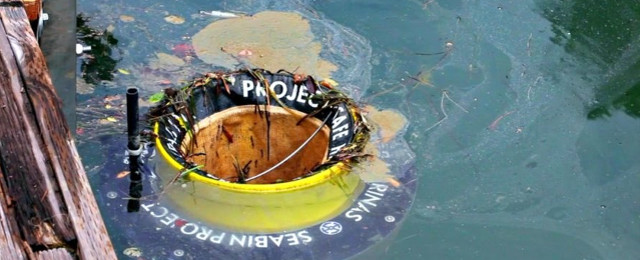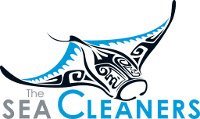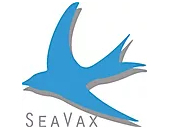Innovations to clean our oceans
According to Marco Simeoni (Initiator of the Race for Water project): “Cleaning the oceans is unnecessarily expensive since only 10% of plastics float. The rest is below the surface. ” So we have to find a way to recover this waste to counter the companies to use.
I invite you here to discover innovations allowing to recover this plastic waste at sea or better before it reaches the sea.
Boat, Robot, Dam or simple filter, here are the main solutions developed around the world to clean and fish out all the plastic that spills into our rivers and oceans.

Dams
This method, which is not new, is currently of great help in the fight to clean up our oceans. This process allows, with the help of currents, to redirect floating debris in order to collect it in an area suitable for recycling.
Discover the latest innovations used in dams used in the fight against plastics.


Probul and The Great Bubble Barrier® both offer the installation of a bubble curtain to redirect floating debris. Positioned on the bottom, these barriers allow waste to be collected without blocking maritime traffic.
A simple and effective solution that will stop and collect waste before entering our oceans.

The Interceptor and Plastic Vortex use the same principle: channel waste using a floating dam, to reassemble it via a conveyor belt (driven by solar energy or mechanically by the force of the current) and collect everything in a bucket.
These skips are then replaced and unloaded in order to sort and recycle the plastics.

Nets or collectors at sea
It is too late to stop the very first man-made plastic waste from reaching the oceans, it is however, high time to go and clean them.
The decomposition time of plastic varies between 100 years and 1000 years, so it is theoretically still possible to go and pick up this very first waste that arrived in the ocean. A simple net pulled behind a boat allows you to start harvesting, but why not go bigger, much bigger?

Thomsea was born out of a fisherman’s reaction to the Erika oil spill (2000) where the lack of effective control gear was blatant. Three years later, during the Prestige oil spill, the first prototype of the Thomsea trawl demonstrated its performance (validation by the Navy and Cedar).
Since then, Thomsea has been the European leader in the trawl collection of all floating pollution (hydrocarbons and macro-waste).

C TO SEA is part of the extension of the action initiated by its partner THOMSEA (inventor of anti-pollution trawls, used in particular by the French Navy to fight against oil spills).
C TO SEA offers these trawls for sale or rental and takes care of the training for their use.
These trawls make it possible to fight against all forms of floating marine pollution: hydrocarbons, macro waste, plastic waste, pelagic algae, storm debris …”

ReCleanSea is developing a collector for the recovery of macroscopic plastic waste and recovery of heavy oils. This 18 m wide collector has been used in harbors and bays, towed by small vessels or anchored in rivers.
The French navy has 150 as the first line of defense against oil pollution. The collector is scalable thanks to pieces of 100 m wide each, which allows it to reach a width of 500 m and a length of 700 m.

The Ocean Cleanup, with the participation of Ecocoast, has developed offshore dams to collect plastics already present off our coasts.
Consisting of a float and a skirt, this system makes it possible to capture and concentrate plastic waste moving with waves and currents.
This method thus makes it possible to directly clean large areas of plastic accumulation present at sea (gyre).

OceanKita offers in Indonesia and in Asia-Pacific the most relevant collectors in terms of cost-efficiency: Thomsea trawl-nets, SEADS’ Blue Barriers and Clearbot marine robots. Following the recurring demand of stakeholders, OceanKita has also selected two solutions to process plastic waste, one from ReForm Plastic to make boards then a variety of versatile products and the Earthwake pyrolysis.
OceanKita is also conducting cleanups actions across Indonesia in partnership with local communities. Plastic processing facilities are expected to follow soon.

Robots
We are in a world where new technologies and robotics are taking up more and more space in our daily life. But then why not use it to help us correct our mistakes and clean up our ports and rivers?
With a radio remote control in hand or even independently, here are our new allies against the pollution of our marinas.

The IADYS company marketed the Jellyfishbot robot in 2018. It has proven itself in the port of Cannes and is now deployed in several port areas in France and abroad (Switzerland, Norway, Japan and Singapore). Thanks to its radio-controlled guidance system with a range of 400m, it is possible to collect the waste present on the surface between the boats.

Filters
Just like robots, what could be better than letting others collect waste without getting tired? Here there is no need to calibrate a machine, nature does the work for you.
A net at the outlet of the pipe or the installation of a receptacle functioning as a vacuum cleaner and all the waste ends up blocked there. All that remains is to come and change the filter from time to time.

Storm Water Solutions offers a simple and innovative way to clean the plastic present at the outlet of the sewers.
The purpose of putting their reusable nets in place is to prevent waste larger than 5 millimeters from ending up in our lakes, rivers and oceans.
This technique has been used in different regions of Australia for more than 15 years.

The Seabin is a floating bin that can be installed in the water of marinas and commercial ports. The Seabin allows the collection of all floating waste. Water is drawn into a collection bag inside the Seabin, leaving trash and debris trapped in the salvage bag to be disposed of properly.
The Seabin also has the potential to collect a percentage of oils and pollutants.

Ships
Vessels have the advantage compared to other proposals, as they have a high level of mobility. This means they can be sent all over the world in order to bring solutions directly to the most affected areas.
Plastic Odyssey has just transformed a ship into a floating laboratory, advancing thanks to plastic waste. This technological feat is possible thanks to an on-board miro-factory which transforms waste into fuel due to the principle of pyrolysis (thus making it possible to power the ship’s engines).
The ship will be used as a workshop to build and test low-tech and open-source machines to reduce and recover plastic.
With this ship, Plastic Odyssey has embarked on a 3-year round-the-world expedition to spread their technologies and help develop local economies while cleaning up our environment. This expedition is an opportunity to confront the realities on the ground and to adapt solutions to local needs.

The aim of The Sea Cleaners association is to build a catamaran with automated collection and energy recovery systems on board. This vessel will be able to work and recover our waste in a continuous flow.
Like the ship of the NGO Race for Water, this ship should be self-sufficient in energy thanks to wind and solar energy. And like the Plastic Odyssey ship, it will use the recovery of plastic waste as an energy source to power its electric motors.
In 2019, prototypes of this system were tested. Now, we will have to wait until 2021 for the start of its construction and 2023 for the commissioning of the Manta and finally be able to see it transform our marine litter during its first collection mission.

Launched by Bluebird Marine Systems, then taken over by the Cleaner Ocean Foundation, the SeaVax project aims to manufacture a multipurpose vessel suitable for recovering oil spilled in our seas and recovering plastic waste, all without impacting marine life.
SeaVax started as a project in 2015, with the construction of a 1/20 scale model.
In 2016, Bluebird Marine Systems conducted model tests in a tank to test the concept of filtration and in 2017 the project was taken over by the Cleaner Ocean Foundation.
In 2020, they are currently waiting for EU funding to build the ship.
If you know NGOs or associations to add to this list,
thank you for providing feedback!



